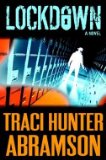What’s in a name? Well, as it turns out, it can be quite a bit. I recently read a couple contemporary works where the heroine, aged 20-30, was named Peyton. Peyton is an adorable name—in fact, a little too adorable. It was the 370th most popular first name for girls in the 1990s. In the early 2000s, it jumped to the top 200 and has soared to #60 for girls last year.
 So what, you ask? Well, those statistics mean that the average girl named Peyton is less than five years old right now. When I read these, I couldn’t help but thinking of the curly-haired toddler down the street. Although a strong, androgynous girls’ name is awesome and Peyton hits all the right notes with parents and authors alike today, that’s exactly what makes it all wrong when naming a character who’s supposed to be an adult today.
So what, you ask? Well, those statistics mean that the average girl named Peyton is less than five years old right now. When I read these, I couldn’t help but thinking of the curly-haired toddler down the street. Although a strong, androgynous girls’ name is awesome and Peyton hits all the right notes with parents and authors alike today, that’s exactly what makes it all wrong when naming a character who’s supposed to be an adult today.
Personally, I love naming characters. I’m in the process of casting my next book right now, and I’ve spent considerable time searching for just the right name for each character, making sure their names fit their ages, backgrounds, and characteristics. Here are a few of my favorite resources for finding the perfect name. (Note: some of these resources are US-centric, but I’m sure that you can find similar data for other countries.)
Character Naming Books
The Baby Name Wizard by Laura Wattenberg. I picked this up while pregnant with my son, even though my husband and I had the names of our first four children already picked out (two down, two to go).
Why I like this: It give little profiles outlining why and when each name was popular, as well as assigning names to groups according to style and popularity, and lists similar names. (That’s especially good when you have a name you really like but it happens to be your brother-in-law’s name.)
Baby Name Personality Book by Bruce Lansky and Barry Sinrod. The authors of this book surveyed 75,000 parents about 1400 popular names to see what perceptions and connotations the names carried. I picked this up (again, while pregnant) at a thrift store for $2, and I was a little hesitant at first to spend that much (no, seriously), but it’s definitely paid off.
Why I like this: Seriously, where else will you find someone to tell you that a female Jerry calls to mind “a friendly, fun-loving brunette who enjoys being the life of the party” while some see the male Jerry as “likely to wear flashy gold chains and may come on a bit too strong.” Drawbacks of this book? My edition was written in 1992; I think there was an updated edition in 1998. Either way, it’s a little out of date (I mean, seriously, were you naming your character Jerry?).
Character Naming Websites
BabyNames.com. I use this to look up name origins and meanings. Why I like this: I like to be able to search by meaning and/or culture of origin.
 US baby name popularity from 1880 from Social Security records. You can look at the popularity of a name over time, or popular name lists by birth year. Why I like this: This is the best way to find age-appropriate (American) names for characters.
US baby name popularity from 1880 from Social Security records. You can look at the popularity of a name over time, or popular name lists by birth year. Why I like this: This is the best way to find age-appropriate (American) names for characters.
Nymbler from The Baby Name Wizard website. Like the book, this helps to find similar names. Why I like this: It makes it easy to find names by “style,” including origins, popular time period and the more subjective “feel.” I do still prefer the book version, but the website is also fun to play with.
The Baby Name Wizard’s Name Voyager, which generates graphs of name popularity over time. The data is based on the SSA. Why I like this: It’s a visual representation of popular names over time, which is a little more accessible than just the lists from the SSA. (The blog also talks about naming trends.)
The US Census Surname Distribution to find last names, and to check if the sometimes crazy last names I want to use are really last names. (Real names include Police, Outlaw, Saint, Notice, Justice and Riddle. Only one of which I’ve actually used.) Why I like this: when I’m stumped on a last name, reading through the list or using a random number generator can help me finish my character’s name.
Be sure to check in tomorrow for more on using head words, and be sure to sign up if you want your website reviewed!
How do you find your characters’ names? What are your favorite or least favorite character names? Would you ever comment on a character’s name in critique?
Photo credits: Name tag—Henk L; Jim—Deon Staffelbach
 But before we finish up, I want to know what your thoughts are on deep POV in general. What do you think about deep POV? Does it jar you to read a book with inconsistent POV depth (ie in one sentence we’re getting the character’s thoughts directly and in the next it’s like we’re watching the scene from 10 feet away)? Do you enjoy writing in deep POV? Do you find it easy or challenging?
But before we finish up, I want to know what your thoughts are on deep POV in general. What do you think about deep POV? Does it jar you to read a book with inconsistent POV depth (ie in one sentence we’re getting the character’s thoughts directly and in the next it’s like we’re watching the scene from 10 feet away)? Do you enjoy writing in deep POV? Do you find it easy or challenging? 
 It started off promising. The beginning showed the Jackson 5 practicing their music and dancing, and the rigors of their lives. It showed the psychological relationships of the characters. But instead of delving deeper and deeper into Michael’s psyche over time, the movie seemed to pull back. As Michael seems to push his family away to pursue a solo career, we see less and less of him—and it feels like we’re being pushed away, too. We go from seeing his insecurities and fears to looking in at Neverland from the outside, just like we always have.
It started off promising. The beginning showed the Jackson 5 practicing their music and dancing, and the rigors of their lives. It showed the psychological relationships of the characters. But instead of delving deeper and deeper into Michael’s psyche over time, the movie seemed to pull back. As Michael seems to push his family away to pursue a solo career, we see less and less of him—and it feels like we’re being pushed away, too. We go from seeing his insecurities and fears to looking in at Neverland from the outside, just like we always have. While this is a powerful technique, point of view has always been a limitation of film. There has never been and may never be a satisfactory adaptation of
While this is a powerful technique, point of view has always been a limitation of film. There has never been and may never be a satisfactory adaptation of 

 Now, this is a time to avoid head words (
Now, this is a time to avoid head words ( So what, you ask? Well, those statistics mean that the average girl named Peyton is less than five years old right now. When I read these, I couldn’t help but thinking of the curly-haired toddler down the street. Although a strong, androgynous girls’ name is awesome and Peyton hits all the right notes with parents and authors alike today, that’s exactly what makes it all wrong when naming a character who’s supposed to be an adult today.
So what, you ask? Well, those statistics mean that the average girl named Peyton is less than five years old right now. When I read these, I couldn’t help but thinking of the curly-haired toddler down the street. Although a strong, androgynous girls’ name is awesome and Peyton hits all the right notes with parents and authors alike today, that’s exactly what makes it all wrong when naming a character who’s supposed to be an adult today.
